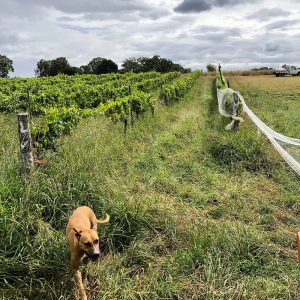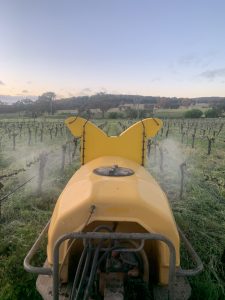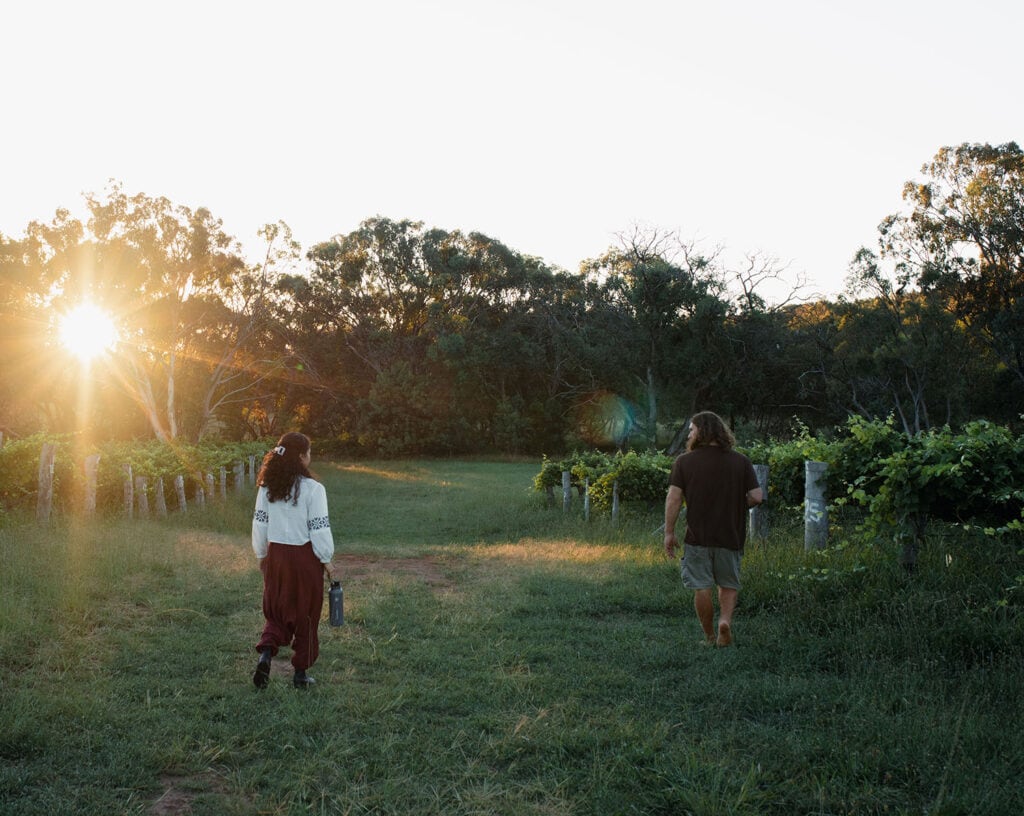Trippin Round the Sun – 2023
2023 TRIPPIN’ ROUND THE SUN The act of naively undertaking an earthly task – equating in time to the rotational length of the
 If you are growing wine, there is one thing you prioritise above all else – that’s growing wine. The economics of wine growing, more so than any other form of agricultural production, are closely tied to quality. Therefore, the health of the soil and ecosystem is quite often disregarded in search for growing the highest quality product, and hopefully not at an economic loss. This one-eyed pursuit of quality, plus the constraints of contemporary economics, has resulted in a slow but steady deterioration of vineyard soils across the globe. In viticulture, soil is thought of no further than merely its physical characteristics: sand, loam, alluvium, chalk, slate, clay etc. However, soil involves a lot more than merely its weathered rock component. Soil contains life – and life’s foundation is carbon. Without an abundance of carbon – both living and non-living forms – soil will disappear. If nothing else we have perfected systems that remove soil carbon and erode topsoil. Once soil disappears, abundance follows. Unless however we use a fossil fuel based economy and chemical industry to prop it up. Here we have arrived at modern agriculture. Burn through energy, money and fertile soil in order to grow shit – allow someone else to deal with the consequences later.
If you are growing wine, there is one thing you prioritise above all else – that’s growing wine. The economics of wine growing, more so than any other form of agricultural production, are closely tied to quality. Therefore, the health of the soil and ecosystem is quite often disregarded in search for growing the highest quality product, and hopefully not at an economic loss. This one-eyed pursuit of quality, plus the constraints of contemporary economics, has resulted in a slow but steady deterioration of vineyard soils across the globe. In viticulture, soil is thought of no further than merely its physical characteristics: sand, loam, alluvium, chalk, slate, clay etc. However, soil involves a lot more than merely its weathered rock component. Soil contains life – and life’s foundation is carbon. Without an abundance of carbon – both living and non-living forms – soil will disappear. If nothing else we have perfected systems that remove soil carbon and erode topsoil. Once soil disappears, abundance follows. Unless however we use a fossil fuel based economy and chemical industry to prop it up. Here we have arrived at modern agriculture. Burn through energy, money and fertile soil in order to grow shit – allow someone else to deal with the consequences later.
What if modern viticulture was to look beyond the vine and think more deeply about the soil from which the vine arises, and all the other forms of life that exist within a vineyard’s ecosystem? What if we were to think about the long-term viability of wine growing in a changing economy and climate? Is it even possible to grow quality wine whilst also regenerating soils and obtaining maximum diversity?
These are questions we are trying to answer. Not by postulating some obscure mathematical formula or by theorising in some unintelligible academic paper, but by practising regenerative techniques in the vineyard, making wine in a shed and taking said wine to market. 
For us healthy soil is uno numero. Making quality wine is (hopefully) a pleasant by-product. This approach is somewhat the antithesis of a conventional wine growing mindset. Now there is some saying about a horse and a cart. I think maybe we are just taking the horse, which has been behind and pushing the cart for too long, and re-instating it to its rightful place out front. I dunno, maybe we should just set the horse free, suck it up and pull the cart ourselves. Simply put our grand theory for the longevity of quality wine production is this: try and build healthy soil, analyse to see if soil is actually healthy, see if people actually want to drink wine from said soil.
 In order to regenerate our vineyard soils we have both short-term and long-term techniques to use.
In order to regenerate our vineyard soils we have both short-term and long-term techniques to use.
In the short-term we are using a method preached by two well-respected agronomists; John Kempf from the USofA and Greame Sait from the land of Oz. It looks like this: provide the plant with required nutrients and let the plant express itself to the fullest. What does full expression of a plant look like? A plant that can utilise its own immune system and actively build soil from its rhizosphere outwards. We use plant sap analysis to see what nutrients are deficient and we apply said nutrients to the plant via foliar fertilisation. We also apply regular doses of compost tea to the soil and foliage of our vines, ensuring good populations of beneficial microbes – the workforce. We allow the “weeds” in the vineyard under vine to grow wild and free. Always having living roots in as much of the soil as possible is nothing other than essential for improving soil health. We do not apply any herbicides, pesticides or fungicides. These all deteriorate soil, ecosystem and human health. We abscond all forms of tillage, slicin’ n dicin’ aint helping no one. Especially the mycorrhizal fungi and earth worms.
In the long-term we aim to redesign our vineyard trellising system in order to facilitate year-round grazing of live-stock. Most likely sheep and birds. It’s hard to see that any regenerative system can be viable in the long-term without implementing a well-managed grazing system. It’s a simple as this: grazing animals and managing them appropriately builds soil. A by-product of this is the reduction or even elimination of expensive fertilisers and energy intensive under vine management.
We’ve sent ourselves to the moon, we’ve created enough bombs to end civilisation as we know it and we’ve created energy systems that have changed the planets climate. Do we really think that growing wine and regenerating soils at the same time is that far out of our reach?
2023 TRIPPIN’ ROUND THE SUN The act of naively undertaking an earthly task – equating in time to the rotational length of the
A VIGNERON, A VINE AND THREE PLANETS WALK INTO A BAR… The Vigneron says to the Vine, “show me how you flower.”


First generation farmers who believe that soil health & nutrition is not only important but also very cool. Our minimalist philosophy carries from our feet on the earth, through our hearts and to our vines.
Liquor license number: LIQW880010288
‘It is against the law to sell or supply alcohol to, or to obtain alcohol on behalf of, a person under the age of 18 years.’
We acknowledge the traditional custodians of this land – the Wiradjuri people – who have cared for and shaped this region since the beginning of time. We hope to pay our respects to their enduring custodianship through careful and considered land management.
Design & Development by AKIRE.Studio
Join our newsletter to be the first to hear about product drops, blog posts & adventures…